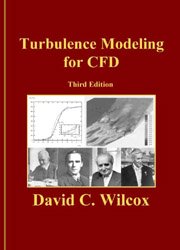Turbulence modeling for CFD download
Par pena melissa le lundi, août 24 2015, 21:41 - Lien permanent
Turbulence modeling for CFD by David C. Wilcox


Turbulence modeling for CFD ebook download
Turbulence modeling for CFD David C. Wilcox ebook
ISBN: 0963605100, 9780963605108
Format: pdf
Page: 477
Publisher: DCW Industries
More significantly for motor heads, CFD is Robert Moser, a professor in the Mechanical Engineering Department and expert in turbulence modeling, is making scientific strides in understanding the physics of turbulence. Wilcox - Free chm, pdf ebooks rapidshare download, ebook torrents bittorrent download. TURBULENCE MODELLING IN CFD 7.1 Turbulence models for general-purpose CFD 7.2 Reynolds-averaged Navier-Stokes (RANS) models 7.2.1 Linear eddy-viscosity models 7.2.2 Non-linear eddy-viscosity models 7. These selections add to AcuSolve's existing key turbulence models including LES (Large Eddy Simulation), DES (Detached Eddy Simulation), and other RANS models. The addition of these new turbulence models provides a broader selection of turbulence modeling options within AcuSolve. They used a potential based CFD ie no turbulence modelling. For simulating an inlet turbulence level of 2%, the k-omega (SST) turbulence model was used after calculating the value for "k" and the length scale equal to the mesh size of the last screen was used for specifying "omega". Pre-Processing: Edge-based surface mesh extrusions. I red in Seahorse magazine (September issue) about North sails Japan work in this area. The target audience for this course is practicing engineers who wish to learn more about how to choose and apply effective turbulence modeling in their CFD analysis. In the world of academia, the field of computational fluid dynamics [CFD] allows engineers and researchers to perform predictive modeling that can lead to faster, sleeker and safer vehicles in the air or on the ground. Despite this, a single mathematical model that covers all kind of turbulent flows has not yet been derived. Turbulence modelling is a key element in Computational Fluid Dynamics (CFD). His research interest include turbulence modeling, geophysical fluid dynamics and unsteady separated flows. But of course, as we all know, this only takes us part way towards a practical CFD solution for real engineering flows – there is still the troublesome matter of turbulence modelling! Download Free eBook:Turbulence Modeling for CFD by David C.